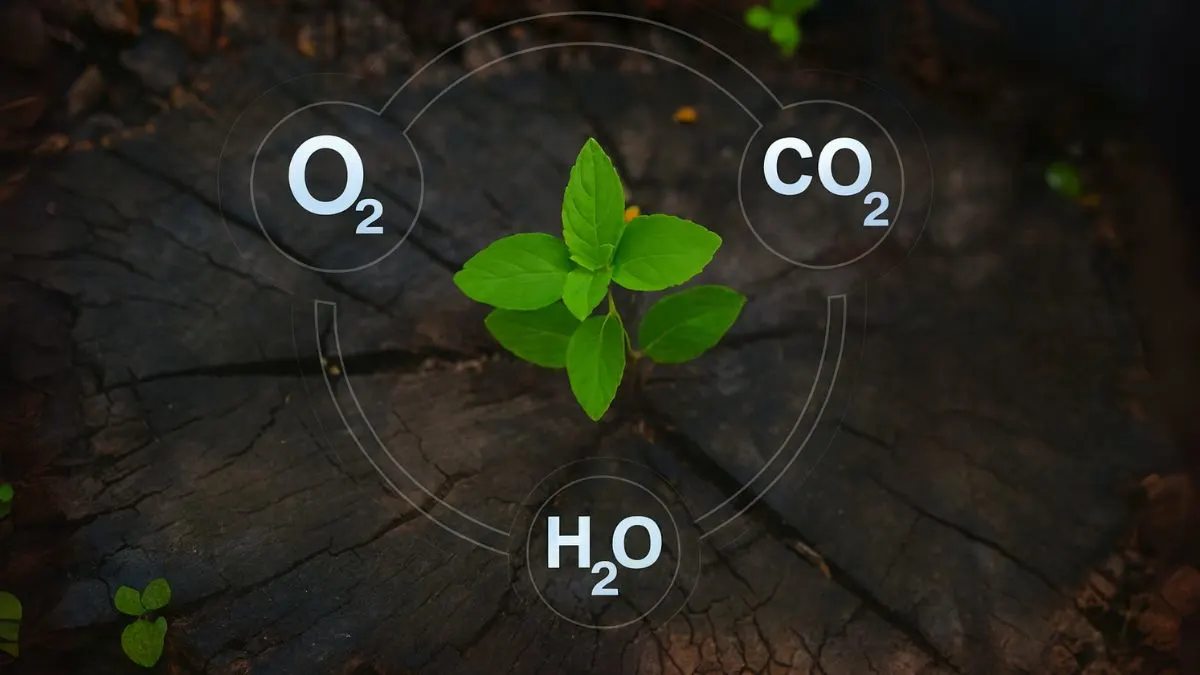If you’ve ever wondered how your plants breathe and create their own food, you’re not alone. Whether it’s a sunflower in a Canadian backyard or a Philodendron in an American living room, both follow the same incredible life processes. At the heart of plant survival lie two fundamental activities: photosynthesis and respiration.
When I started gardening, I mistakenly believed that plants only released oxygen. But after watching how my indoor plants behaved differently in light and dark, I realized they were constantly balancing both oxygen intake and carbon dioxide absorption. Let’s break it down in simple terms.
What is Photosynthesis?

Photosynthesis is the process by which plants make their own food. In the presence of sunlight, plants absorb carbon dioxide for photosynthesis and release oxygen into the air.
- Plants use chlorophyll, the green pigment in leaves, to capture sunlight.
- Through the photosynthesis process, plants absorb carbon dioxide and release oxygen, which benefits both humans and animals.
- The glucose formed during this process becomes the energy source for growth, flowering, and seed production.
In simple words: all the food that is respired for life processes comes from photosynthesis.
What is Respiration in Plants?
While photosynthesis makes food, respiration helps plants use that food for survival. Plants respire all the time, whether it is dark or light.
- During respiration, plants absorb oxygen for respiration and carbon dioxide for photosynthesis.
- Energy is released by breaking down glucose, which powers cell functions like root growth, flower production, and leaf repair.
- Unlike photosynthesis, respiration does not depend on sunlight—it happens 24/7.
This is why indoor gardeners notice oxygen levels dip slightly at night when houseplants continue to respire without photosynthesis.
Also Read: 5 Amazing Uses of Beer in Gardening
How Do Photosynthesis and Respiration Work Together?
You might think of them as opposites, but they are actually complementary.
- During daylight hours, plants conduct both photosynthesis and cellular respiration.
- While photosynthesis stores energy by making glucose, respiration releases that energy so plants can use it.
- Without one, the other cannot exist.
This delicate balance is what keeps both plants and humans alive—plants produce the oxygen we breathe while consuming the carbon dioxide we exhale.
Key Differences Between Photosynthesis and Respiration
Feature |
Photosynthesis |
Respiration |
Time of occurrence |
Day (requires light) |
Day & night (constant) |
Main gases involved |
Absorbs CO₂, releases O₂ |
Absorbs O₂, releases CO₂ |
Purpose |
Makes food (glucose) |
Breaks down food for energy |
Dependency |
Needs sunlight |
Independent of light |
This table highlights why it’s important to understand both processes when caring for your plants.
Practical Gardening Insight
As a gardener, understanding these processes can improve plant care:
- Sunlight placement matters – Since photosynthesis needs light, always place sun-loving plants in areas where they can get at least 6 hours of exposure.
- Nighttime care – Remember, plants respire all the time, whether it is dark or light, so don’t overcrowd indoor spaces with too many plants at night if ventilation is poor.
- Fertilizer use – The energy from photosynthesis powers nutrient absorption, so feeding plants regularly enhances both photosynthesis and respiration.
From my experience, I saw my peace lilies struggling until I moved them closer to a window. Once they got enough light for photosynthesis, their growth doubled, proving how vital this process is.
Also Read: Why Aglaonema Evergreen Is the Perfect Indoor Plant for Beginners
Why Is This Important Globally?
For readers in the USA, Canada, and worldwide, understanding photosynthesis and respiration is not just about gardening. It’s about recognizing how plants sustain life on Earth.
- Forests act as the planet’s lungs, producing oxygen.
- Crops rely on these processes for better yields.
- Climate change affects photosynthesis rates, directly impacting food supply.
By planting more trees and caring for indoor plants, we’re not just decorating spaces—we’re supporting the global oxygen cycle.
Conclusion
In summary, photosynthesis and respiration are two sides of the same coin. Through the photosynthesis process, plants absorb carbon dioxide and release oxygen, creating food. Meanwhile, plants respire all the time, whether it is dark or light, breaking down that food to survive. During daylight hours, plants conduct both photosynthesis and cellular respiration, ensuring balance in nature.
For gardeners, the lesson is simple: give your plants the right sunlight, healthy soil, and proper care, and they will reward you with both beauty and life-supporting oxygen.
👉 Next time you step into your garden, pause and appreciate this invisible miracle happening in every leaf.






